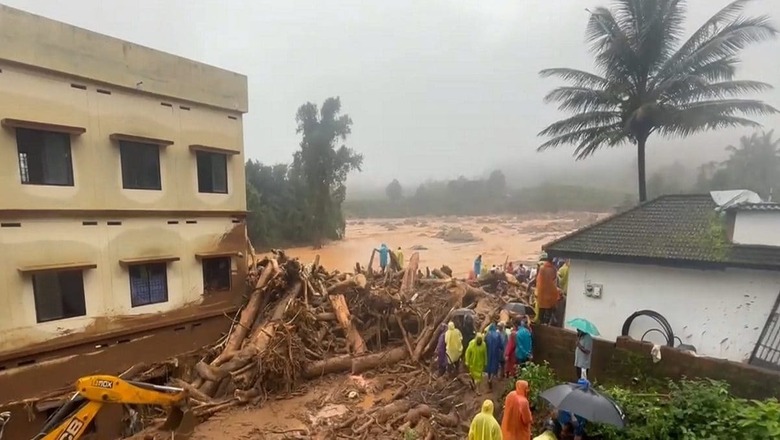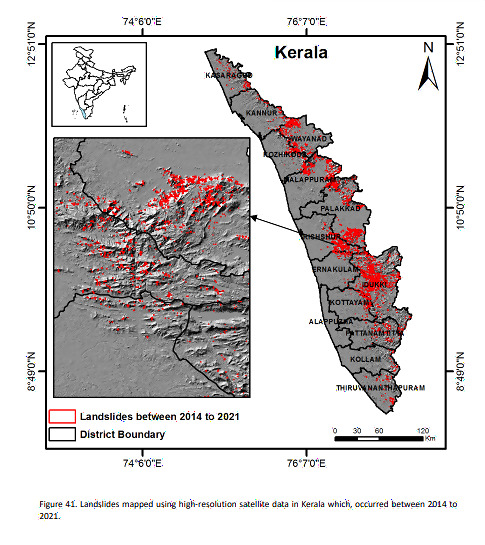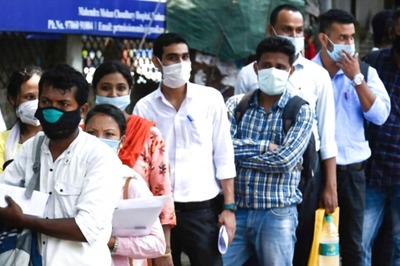
views
The risk assessment led by the Hyderabad-based National Remote Sensing Centre ranked Thrissur third among the most vulnerable districts after Rudraprayag and Tehri Garhwal in Uttarakhand. This was followed by Palakkad (5), Malappuram (7), Kozhikode (10), Wayanad (13), Ernakulam (13), Idukki (18), Kottayam (24), Kannur (26), and Thiruvananthapuram (28).

The rest of the four districts, Pathanamthitta (33), Kasargod (44), Kollam (48), and Alappuzza (138), also featured in the 147 most landslide-affected regions in the first such pan-India rainfall-triggered landslide database of nearly 80,000 landslides between 1988 and 2022.
ONE LANDSLIDE AFTER ANOTHER
“This region in Wayanad was hit by a devastating landslide in August 2019 too, killing 17 people. It wiped away a lot of the natural vegetation, exposing the bedrock which made the recent landslide even more severe. The topsoil here is unconsolidated, barely 2-3 meters deep, and gets eroded when the rainfall is extremely heavy,” said Dr PS Sunil, senior geologist from Cochin University of Science and Technology (CUSAT).
Close to 160 lives have been lost in the disaster that hit Wayanad in the early hours of Tuesday while many others remain missing as the rescue operation continues. The steep slopes and high gradient of the hills, nearly 45 degrees, washed away several small townships along the river bank, including a bridge that was the main connecting link.
Geo-analytical expert Raj Bhagat Palanichamy who studied the disaster-hit area says, the Chaliyar river had a steep fall of around 1,200 m to reach the Vellarmala-Chooralmala section, and its velocity was so high that it washed away everything that came in its path. “The flow was so intense that the river did not bend, but followed a straight path. The topography was already risk-prone after the 2019 landslide which caused massive debris flow. This stream has huge potential to erode further if preventive measures are not taken soon,” he said.
‘HEED WARNING BY PROF GADGIL, KASTURIRANGAN’
The scale of this disaster has also brought back focus on the recommendations made by Professor Madhav Gadgil and Dr K Kasturirangan. In 2011, the Western Ghats Ecology Expert Panel (WGEEP) headed by Prof Gadgil recommended that areas in Kerala which come under the Western Ghats be classified as ecologically sensitive, and called for strict curbs on mining and quarrying and on the use of land for non-forest purposes.
“Prof Madhav Gadgil had very specifically stated that Wayanad, Idukki Western Ghats had an ecologically sensitive area that needs to be protected. But, we, the people of Kerala, were not in agreement with the report. This is the right time for the Kerala government to convene an all-party meeting to discuss it because these disasters are happening every monsoon,” Kerala MP NK Premachandran told News18. “We’ll never say that all people be evacuated from the area, but some precautionary measures have to be taken, otherwise these calamities will continue to strike.”
Despite a lower number of landslides compared to the Western Himalayan region, the Western Ghats have become a vulnerable hotspot due to environmental degradation, high population, and household density, especially in Kerala. The replacement of natural vegetation with plantations has worsened the impacts, say experts.
“The Gadgil committee report was submitted long back but is yet to be implemented. We need to take the carrying capacity maps seriously and take immediate mitigation measures to reduce overexploitation and land use,” said MH Swaminath, former Indian Forest Service officer, Karnataka.
AS CLIMATE WARMS, SCIENTISTS STRUGGLE TO PREDICT
Most such landslides in Kerala have been triggered by heavy monsoon rains, and global warming has fuelled the intensity and frequency of such events. Despite advancements in weather forecasting, meteorologists are struggling to predict such short bursts of very heavy rains, as they are extremely localised.
“Earlier, it used to drizzle, now it is a downpour. Since the incident struck in the wee hours, people had no time to escape. The Gadgil committee report had already documented the vulnerable areas, and we should control population, construction, and over-exploitation in these areas, but with the support of local people. If no action is taken, then it is certain, there will be more such deadly disasters in the near future,” said Girigan Gopi, senior scientist from MS Swaminathan Research Foundation (MSSRF), Chennai.




















Comments
0 comment